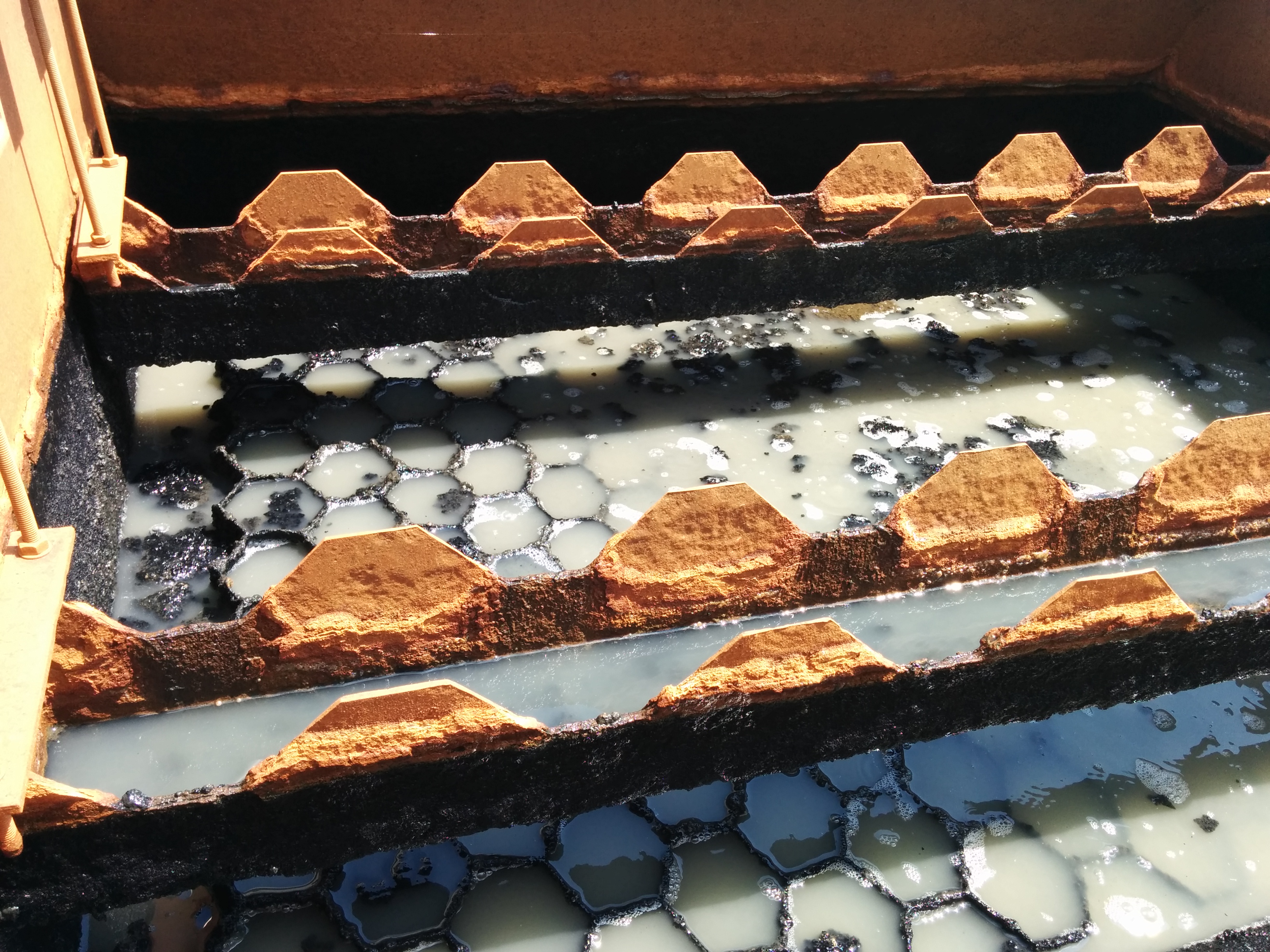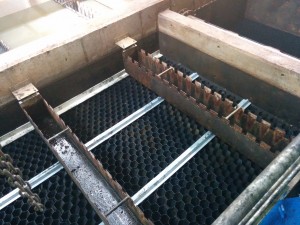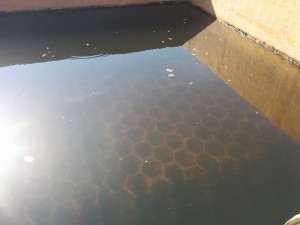
Why my lamellar system doesn´t work?
posted in Technical Articles by TecnoConverting
Recently a client informed us that the lamellar module they bought us was not working: The lamellar was sized to work at 20 m3/h and it was only capable to treat half of the inlet flow.
In this case the costumer only bought the lamellar modules and installed them in a compact decanter manufactured by his own company.
After asking ourselves why this malfunction was happening, began to emerge typical technical rigor questions:
– Inlet flow to treat.
– TSS concentration.
– Water type.
Once checking all data with our engineering department we have confirmed that the lamellar system was correctly sized. So the question was why the lamellar modules couldn´t treat the flow rate of 20 m3/h, when the parameters of our calculation indicated that the plant could treat perfectly 21 m3/h.
The answer was simple: The settler was wrongly sized.
A common mistake of some client is to confuse lamellar sizing with decanter sizing. To dimension a lamellar settler there are a number of technical considerations that should not be forgotten:
- The height between the bottom of the lamellar modules and the floor of the settling vessel shall be as higher as possible. It´s not possible to install lamellas of one meter high with a bottom height, from lamella base to floor of one meter or less. The reason for this is the turbulences and the preferential channels that are generated causing only a part of the lamellar module to work, and not the entire surface as required; for this reason, the treatment capacity of the settler drops drastically.
– The geometry of the tank. A rectangular settler with poor water inlet distribution causes that only the initial part of the lamellar works and the water cannot reach the end extreme of the settler; due to this the lamellar settler performance is affected, and the process cannot be efficient.
– Sludge removal system. This is one of the most important parts of the settler. It´s important to consider that lamellar systems are able to multiply per four the treatment capacity flow of a settler without lamellas, so the sludge generated is also four times more than generated on conventional clarifiers. If the
equipment does not have a proper sludge removal system, the solids will end exiting by the Thomson troughs for clarified water. Likewise, it´s important to consider that the sludge in excess on the settler can be retained on the lamellar modules, causing clogging therein.
– The total suspended solids. It´s important to note that with a higher concentration of suspended solids, in case a settler is not well sized, it might cause the clogging of the lamella. Sometimes, it´s even traumatic for the client, we have information that some companies have to clean the lamellas two times a month.
A well designed lamellar system together with a good sized settler have to work flawlessly, considering only annual maintenance as any other equipment on the plant.


